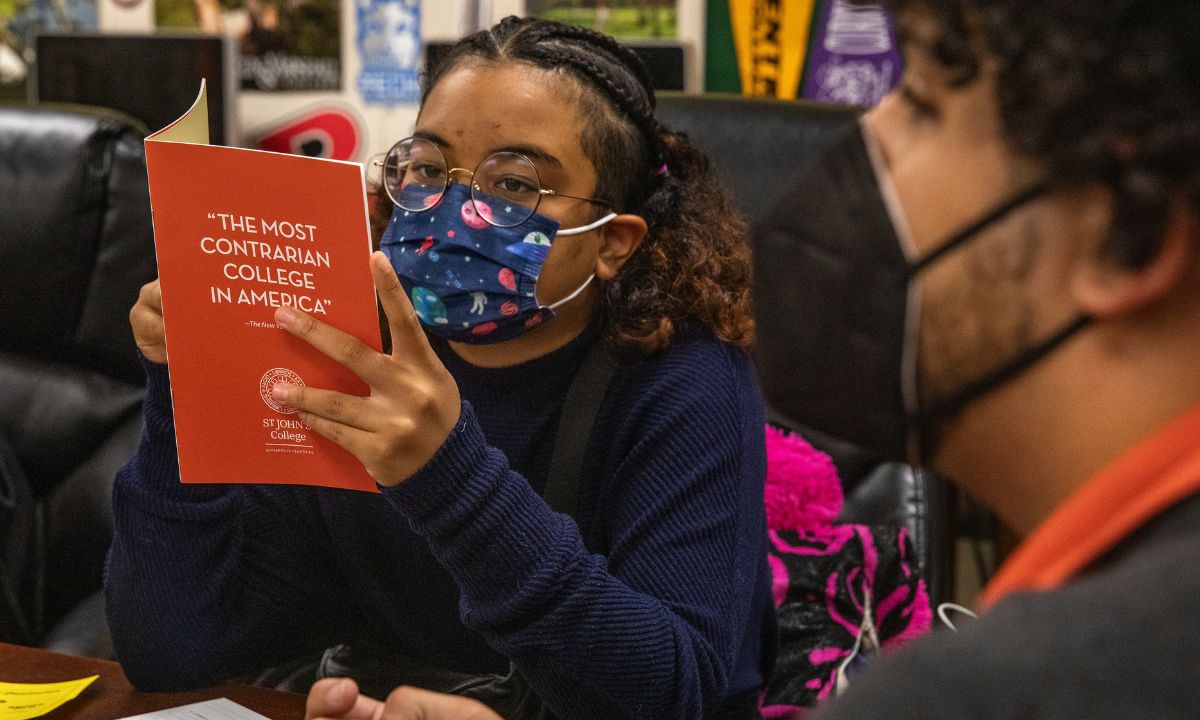College Isn’t Camp. As Enrollment Drops, It’s Time to Take Higher Ed Seriously
White: Treat college as an investment in the future, let HS teens earn credits, use AI to keep graduating seniors on track, focus on in-demand skills

Get stories like this delivered straight to your inbox. Sign up for The 74 Newsletter
The American college landscape is in trouble. Regard for four-year degrees has measurably declined, and though many young adults want to pursue a bachelor’s degree, many others are loath to entertain college as an option. Reasons for this include culture wars on campus, a labor market in flux, chronic post-graduation underemployment and 5 million borrowers in student loan default. To further complicate the issue, the impact of artificial intelligence promises to be consequential, with predictions ranging from moderate shifts in the jobs Americans do to a fundamental remaking of the notion of work. And with college enrollment still below pre-pandemic levels, and universities bracing for an additional 15% drop by 2039 — a demographic cliff brought on by declining birth rates since the Great Recession — the time for action is now.
Reversing the trend will require stakeholders, from college administrators to state legislators, to act with urgency and pragmatism. The following four shifts are crucial for this to occur:
First, high school college counselors and university admissions teams must frame college as a financial investment. Nationally, men cite college’s financial burden as a major factor for not enrolling, while women are overrepresented in the lowest-paying majors. This signals that it’s time to abandon the framing of college as an endeavor that is more social than academic. Despite growing angst about crushing student loan debt, college visits and marketing materials still often focus on factors like niche interest clubs, sorority rushes, sports teams and events, or a school’s geographical location. These non-academic factors drive college selection and spending and help to explain why twice as many American first-year students live on campus as their Canadian counterparts.
College’s foremost value proposition lies in aligning advanced skills with marketplace demands, including forecasted trends. For instance, the demand for data scientists is projected to increase by 36% from 2023 to 2033 — much faster than the average job growth rate. College advisers need to crunch the numbers with students and their families to ensure they are aware of the variety of professions, trades and the earning power of various college degrees.
Second, state legislators need to make it a central priority to expand opportunities for high schoolers to earn college credit. Entering college with some credits already in hand is like starting at first base instead of home plate. States can look to Ohio’s College Credit Plus program, which funds qualifying students’ costs to acquire college credits in high school.
Meanwhile, schools and districts can implement early college and dual-enrollment programs, Advanced Placement courses and the credit-by-testing College Level Examination Program are available for free or at a nominal cost. They can trim tuition expenses, bolster students’ self-perception as capable of succeeding in higher education, increase the odds of graduation and shorten the time to earn a degree by a semester, a year or more. In England, for example, a standard university degree takes three years to complete and the graduation rate hovers around 80%; in the U.S., earning a degree takes four years — or more — the graduation rate is about 50%, and 15% of Americans aged 25 and older have some college education but no degree at all.
Third, college administrators and deans should take advantage of advances in artificial intelligence to increase graduation rates. In 2016, John Jay College used AI and predictive analytics to identify seniors at risk of not graduating. The initiative boosted completion rates by 34%, adding 600 graduates in the two-year pilot. AI predictive modeling is now in use at multiple City University of New York campuses and has increased graduation rates at state schools like Georgia State University by a significant percentage. Use of this technology to identify and follow up with vulnerable students is important, because everyone benefits when more seniors graduate from college on time.
Fourth, education policymakers across the country need to embrace the fact that not everyone wants, or needs, to go to college. Bachelor’s degrees do confer significant advantages for those who earn them, but there are other postsecondary pathways to fulfilling, well-compensated vocations. For example, electricians, who gain entry to their trade through apprenticeships or technical schools, earn a median salary of $62,350 per year — more than $10,000 above the national average of all workers — while dental hygienists train in community college and have a median pay of $94,260 yearly.
Intriguing coursework and exciting social escapades do make for memorable undergraduate experiences, but college is not summer camp; it is an investment in Americans’ individual and collective futures. In the face of declining enrollment, now is the time for policymakers, high school counselors and university administrators to respond to new realities by making these needed changes.
Get stories like these delivered straight to your inbox. Sign up for The 74 Newsletter

;)
